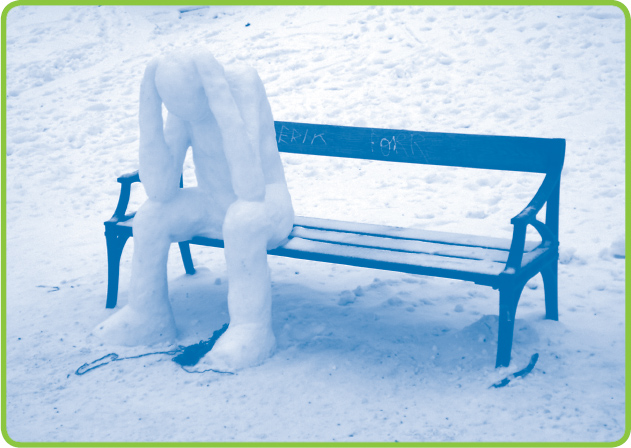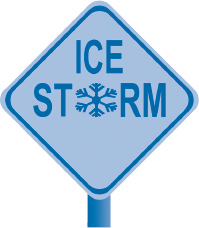It's Raining Fish and Spiders (23 page)
Read It's Raining Fish and Spiders Online
Authors: Bill Evans
The Alps of France and Switzerland are probably the snowiest regions of the world, after North America and Japan. Snowfalls above the 6,000-feet level average 200 to 600 inches (50 feet) each winter. In the Swiss Alps, Santis, at 8,200 feet, gets an average of 570 inches (47.5 feet) each winter. Bessans, in the French Alps region of Savoie, once received 67.8 inches (5.7 feet) of snow in a 19-hour period. This is one of the most intense and extreme snowfalls on record anywhere in the world.
Italy is also known for extreme snowfalls. The town of Montevegrine, in the southern Apennines, once had 54.4 inches (4.5 feet) of snow fall in 24 hours. In Sicily, the town of Floresta recorded 51.2 inches (42.7 feet) in 24 hours on February 22, 1929.

When one thinks of snow, Russia always comes to mind. Every part of that country experiences some kind of snow in winter. Many people think that Siberia has huge snowfalls, but it doesn't. Siberia is so cold and dry that often it gets no more than 20 to 30 inches (1.7 to 2.5 feet) of snow in a year. In contrast, the Western Great Caucasus near Turkey and the Black Sea can have accumulations of 150 to 200 inches (12.5 to 16.7 feet) in one winter. Talk about extreme!
Great Britain's greatest storm took place in only 15 hours. A near world record snow of 70.9 inches (5.9 feet) fell on Dartmoor on February 16, 1929. Norway, too, is a big snow producerâthe Jostedalsbreen Mountains at Fanaraken rake in more than 400 inches (33 feet) of snow in a season. Also in Scandinavia, Sweden's Kebnekaise Mountains see accumulations of 240 inches (16.7 feet) of snow during the winters.
Holy Geez! I Didn't Know You Could Do That with Snow!
People can do some really cool stuff with snow.
I always love to make snowmen. One of my favorite cartoons is Calvin and Hobbs. Now this is my kind of “How to make a go in the snow!”
Homework, Schmomework! Calvin is da' man!

Nothing Like an Avalanche to Perk Up Your Day!
Technically, an avalanche is any amount of snow sliding down a mountainside. An avalanche can be compared to a landslide, only with snow instead of earth. People who live in areas that get a lot of snow also call avalanches “snowslides.”
As an avalanche moves toward the bottom of a slope, it gains speed and power; this can cause even the smallest of avalanches to be a major disaster!
Many kinds of snow can form avalanchesâit all depends on the region, temperature, and weather. Whether the snow is light and fluffy, wet, thick slabs, or flying powder, all avalanches are potentially very dangerous.
Avalanches happen on mountains where extreme amounts of snow fall and build up. They claim about 150 lives a year worldwide, with hundreds more injured or trapped. Don't ski or hike in areas that are marked off due to a possible avalanche!

FEMA/Andrea Booher
Need to Control an Avalanche? Let's Blow It Up!
Only experts are allowed to “create” an avalanche. By deliberately triggering a small, hopefully controlled avalanche, mountain experts hope to release the stresses on the snow that might cause a large, uncontrolled avalanche.
Percussion guns, explosives, and even artillery have been used to produce these controlled avalanches. When an avalanche is to be set off, warnings are issued and people are kept away from areas of potential danger.
Release the Hounds!
Avalanche dogs are a must on any mountain, large or small, and even in flat regions where snow sports are popular. Skiing, hiking, snowboarding, and just about any other snow-related activity you can imagine create plenty of opportunities for accidents. Children get lost, elderly people fall and get covered by snow, and, of course, avalanches are all great reasons to have an avalanche dog around.
In the 1930s, the Swiss Army came up with the idea of using a dog's superior sense of smell to locate people buried in the snow. Once a person is buried in the snow, detection is impossible with the naked eye, but rescue dogs can pick up the human scent easily, making a live recovery possible.
Training is intense. It often takes three years of dedication for the dog as well as the handler before the team is proficient at finding victims in the snow. The dog is taught to not only locate humans, but to also alert everyone and to dig out the victim!
Now that's a goooooooood doggie!
Let's Melt It, Dude!
Rather than hauling the snow away and dumping it in rivers, many cities are now using huge snowmelters. It can melt fourteen dump-truck loads in an hour!


I Didn't Know It Could Snow That Hard!


A New York Story: The Coldest Day Ever in New York City!
New York City has a great history when it comes to snow and cold, captured not only in pictures, but also in the stories that accompany some of the greatest weather moments in the history of the Big Apple. Cold waves and blizzards are the highlights of over three centuries of record keeping in New York City.

Currier & Ives
A massive cold wave swept the Northeast in 1857. January of that year is the coldest month ever recorded in New England. The average temperatures of 16.7°F (-8.5°C) in New Haven, 16.8°F (-8.4°C) in Boston, and 19.6°F (-6.9°C) in New York City remain the coldest months on record. On the 23rd of that month, the Smithsonian thermometer at Erasmus Hall in Brooklyn, New York, reached a high temperature of 0°F (-17.8°C). The Hudson River froze over solidly enough that small food and shop carts could be set up on the river. It was solid enough for people to walk back and forth to New Jersey. That cold wave was captured by Currier and Ives in their two famous prints of New York City and Central Park.
There are several famous blizzards in New York City's history, but none so extreme or bizarre as the Blizzard of 1888. March is a month of extremes as far as temperatures go, and March 1888 was truly extreme. Friday, March 9, 1888, had been the warmest day of the year; shopkeepers advertised S
PRING
O
PENING
D
AY
, and city residents enjoyed balmy weekend temperatures in the 50s! Walt Whitman wrote a poem for the
New York Herald
that ended with the line, “The spring's first dandelion shows its true face.”
